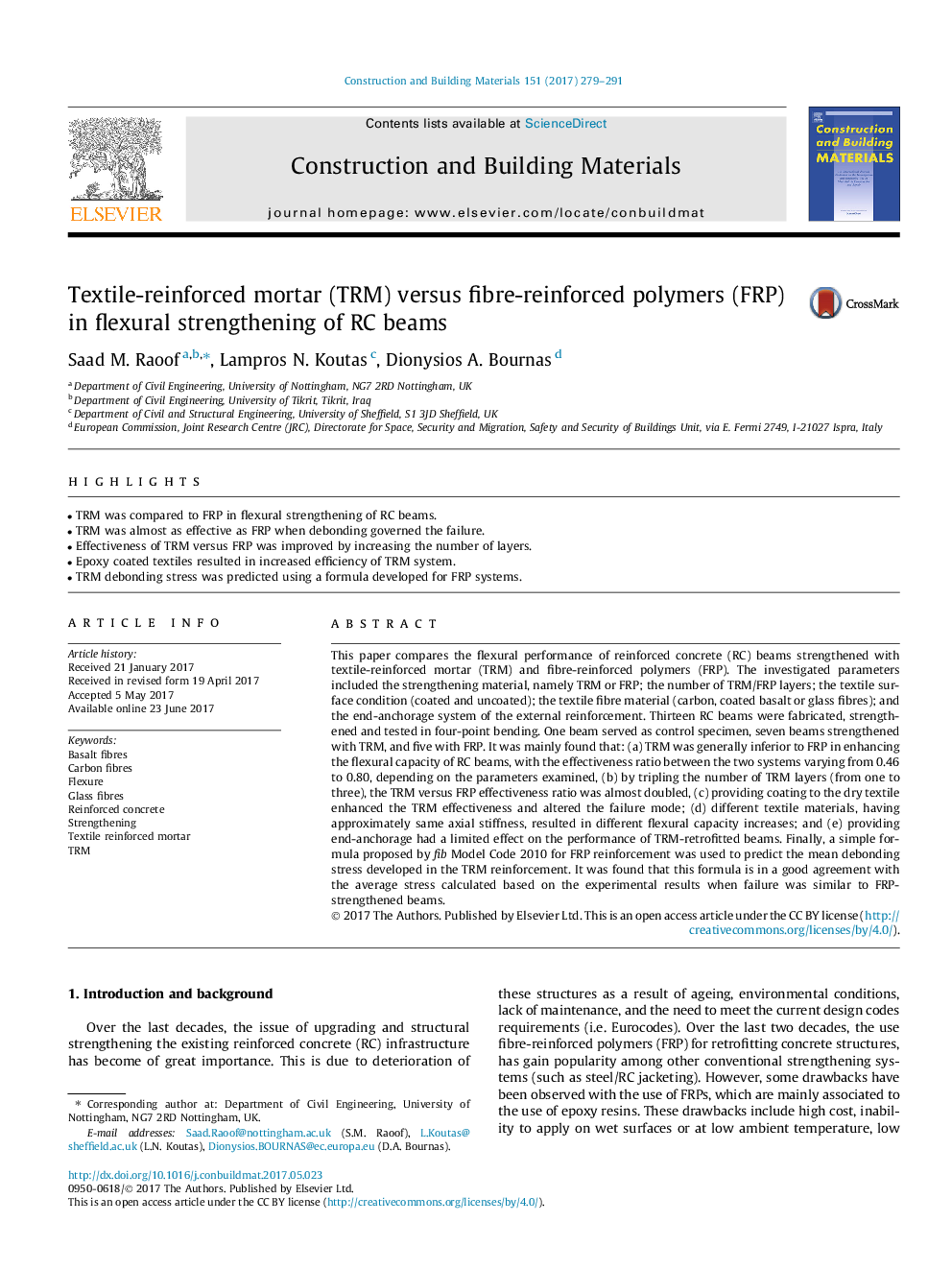| کد مقاله | کد نشریه | سال انتشار | مقاله انگلیسی | نسخه تمام متن |
|---|---|---|---|---|
| 4918184 | 1428755 | 2017 | 13 صفحه PDF | دانلود رایگان |

- TRM was compared to FRP in flexural strengthening of RC beams.
- TRM was almost as effective as FRP when debonding governed the failure.
- Effectiveness of TRM versus FRP was improved by increasing the number of layers.
- Epoxy coated textiles resulted in increased efficiency of TRM system.
- TRM debonding stress was predicted using a formula developed for FRP systems.
This paper compares the flexural performance of reinforced concrete (RC) beams strengthened with textile-reinforced mortar (TRM) and fibre-reinforced polymers (FRP). The investigated parameters included the strengthening material, namely TRM or FRP; the number of TRM/FRP layers; the textile surface condition (coated and uncoated); the textile fibre material (carbon, coated basalt or glass fibres); and the end-anchorage system of the external reinforcement. Thirteen RC beams were fabricated, strengthened and tested in four-point bending. One beam served as control specimen, seven beams strengthened with TRM, and five with FRP. It was mainly found that: (a) TRM was generally inferior to FRP in enhancing the flexural capacity of RC beams, with the effectiveness ratio between the two systems varying from 0.46 to 0.80, depending on the parameters examined, (b) by tripling the number of TRM layers (from one to three), the TRM versus FRP effectiveness ratio was almost doubled, (c) providing coating to the dry textile enhanced the TRM effectiveness and altered the failure mode; (d) different textile materials, having approximately same axial stiffness, resulted in different flexural capacity increases; and (e) providing end-anchorage had a limited effect on the performance of TRM-retrofitted beams. Finally, a simple formula proposed by fib Model Code 2010 for FRP reinforcement was used to predict the mean debonding stress developed in the TRM reinforcement. It was found that this formula is in a good agreement with the average stress calculated based on the experimental results when failure was similar to FRP-strengthened beams.
Journal: Construction and Building Materials - Volume 151, 1 October 2017, Pages 279-291